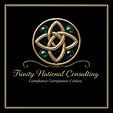Building a Strong Ethical Leadership Framework
- Elizabeth Gilbert

- Oct 10
- 4 min read
In the labyrinthine corridors of modern enterprise, where innovation and regulation intertwine with increasing complexity, the call for a robust ethical leadership model resounds with unparalleled urgency. It is within this crucible of challenge and opportunity that leaders must forge a path illuminated by integrity, transparency, and unwavering commitment to principled action. The journey toward cultivating such a model is neither swift nor simple; it demands a deliberate orchestration of values, vision, and vigilance. As the tides of artificial intelligence surge forward, reshaping the very fabric of industries, the imperative to anchor leadership in ethics becomes not merely advisable but indispensable.
The Architecture of an Ethical Leadership Model
To construct an ethical leadership model is to engage in the meticulous design of a framework that transcends mere compliance, aspiring instead to embed morality at the core of organizational identity. This architecture rests upon pillars that support not only the edifice of trust but also the dynamic interplay between innovation and responsibility. Leaders must envision themselves as architects of culture, crafting environments where ethical considerations are woven seamlessly into decision-making processes.
At the foundation lies transparency, a crystal-clear window through which stakeholders may observe the motives and methods guiding leadership. Transparency fosters accountability, ensuring that actions withstand scrutiny and align with declared values. Complementing this is accountability, the steadfast acceptance of responsibility for outcomes, both triumphant and adverse. Together, these elements cultivate a fertile ground for trust, the lifeblood of enduring relationships within and beyond organizational boundaries.
Moreover, the ethical leadership model must embrace inclusivity, recognizing the diverse perspectives that enrich understanding and fortify resilience. By inviting voices from varied backgrounds and disciplines, leaders can anticipate ethical dilemmas with greater acuity and craft solutions that honor the collective good. This inclusivity extends to the realm of artificial intelligence, where ethical considerations demand vigilance against bias, privacy infringements, and unintended consequences.

What are the 5 Principles of Ethical Leadership?
The quintessence of ethical leadership crystallizes into five guiding principles, each a beacon illuminating the path toward moral excellence:
Integrity - The unwavering adherence to moral and ethical codes, even when faced with adversity or temptation. Integrity is the compass that ensures consistency between words and deeds.
Fairness - The commitment to justice and impartiality, ensuring that decisions and actions do not favor one party unjustly over another.
Respect - The recognition of the inherent dignity of every individual, fostering an environment where diverse opinions and rights are honored.
Transparency - The open communication of intentions, processes, and outcomes, enabling stakeholders to make informed judgments.
Accountability - The readiness to accept responsibility for one’s actions and their consequences, reinforcing trust and credibility.
These principles serve not only as ethical lodestars but also as practical guides for leaders navigating the intricate challenges of regulated industries. By embodying these tenets, leaders can cultivate cultures where ethical considerations are not afterthoughts but foundational elements.

Navigating the Ethical Leadership Framework in the Age of AI
The advent of artificial intelligence introduces a new dimension to the ethical leadership model, demanding heightened vigilance and adaptability. AI’s transformative potential is matched only by the ethical quandaries it presents—questions of bias, privacy, accountability, and the displacement of human judgment. Leaders in regulated industries must therefore engage with an ethical leadership framework that anticipates these challenges and embeds safeguards accordingly.
Practical steps toward this integration include:
Establishing clear ethical guidelines for AI development and deployment, ensuring that algorithms operate transparently and without prejudice.
Implementing rigorous oversight mechanisms that monitor AI systems for compliance with ethical standards and regulatory requirements.
Fostering interdisciplinary collaboration between technologists, ethicists, legal experts, and business leaders to holistically address AI’s implications.
Promoting continuous education and awareness among employees and stakeholders about the ethical dimensions of AI.
Encouraging open dialogue and feedback loops to identify and rectify ethical concerns promptly.
By weaving these strategies into the fabric of leadership, organizations can harness AI’s promise while safeguarding human values and societal trust.

Cultivating Ethical Leadership: Practical Recommendations
The translation of ethical ideals into tangible practice requires deliberate action and sustained commitment. Leaders must embark on a journey of self-reflection and organizational transformation, guided by the following recommendations:
Lead by example: Demonstrate ethical behavior consistently, setting a standard that permeates all levels of the organization.
Develop comprehensive ethics training programs: Equip employees with the knowledge and tools to recognize and address ethical dilemmas.
Create safe channels for reporting unethical conduct: Encourage transparency and protect whistleblowers to maintain organizational integrity.
Integrate ethics into performance metrics: Reward behaviors that align with ethical standards, reinforcing their importance.
Engage stakeholders regularly: Solicit input and feedback to ensure that ethical considerations remain relevant and responsive to evolving challenges.
These measures, when enacted with sincerity and rigor, transform ethical leadership from abstract aspiration into lived reality.
The Enduring Promise of Ethical Leadership
In the final analysis, the pursuit of a strong ethical leadership model is a testament to the enduring human aspiration for justice, dignity, and trustworthiness amidst the complexities of modern enterprise. It is a solemn pledge to navigate the uncharted waters of innovation with a steadfast moral compass, ensuring that progress does not come at the expense of principle. As the guardians of organizational conscience, leaders bear the profound responsibility to cultivate cultures where ethics are not merely codified but celebrated as the very essence of leadership.
The path is arduous, the challenges manifold, yet the rewards—resilient trust, sustainable success, and a legacy of integrity—are immeasurable. In embracing this noble endeavor, organizations position themselves not only as pioneers of innovation but as custodians of a future where technology and humanity advance hand in hand, guided by the luminous light of ethical leadership.




Comments